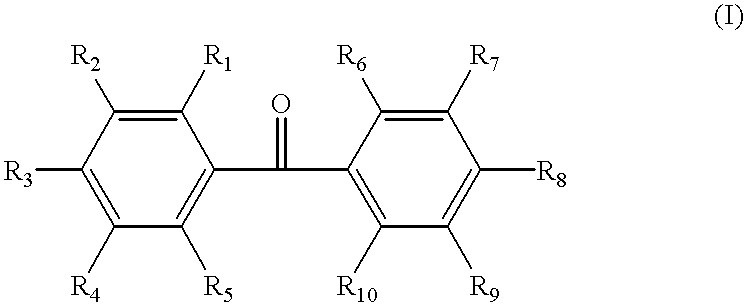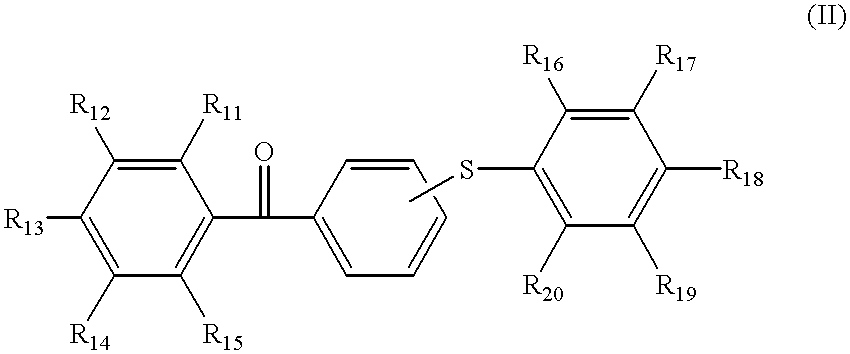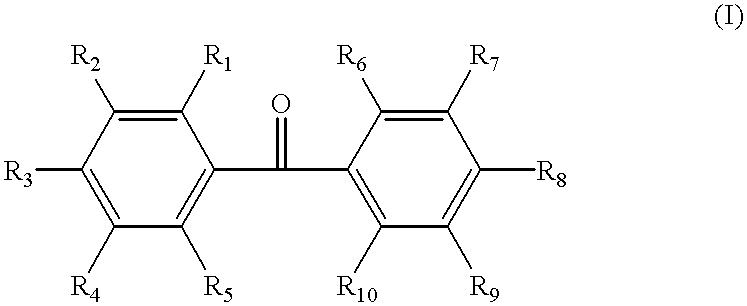Fluorescent conversion filter and organic light-emitting device equipped with the fluorescent conversion filter
a technology of fluorescent conversion filter and organic light-emitting device, which is applied in the field of fluorescent, can solve the problems of inability to achieve the high brightness inability to achieve long life of white light-emitting device, and inability to achieve high brightness. achieve the effect of suppressing decomposition and quenching of fluorescent dye, and facilitating control of radicals
- Summary
- Abstract
- Description
- Claims
- Application Information
AI Technical Summary
Benefits of technology
Problems solved by technology
Method used
Image
Examples
example 2
The filter portion of Example 2 was fabricated in the same manner as in Example 1 except that the photopolymerization initiator of the fluorescent conversion filter of Example 1 (5 parts by weight of a benzophenone compound of (I-4)) was replaced by 5 parts by weight of a benzophenone compound of (I-5). On the thus fabricated filter portion, an organic light-emitting element 14, similar to that of Example 1, was formed to obtain an organic light-emitting device of Example 2.
example 3
The filter portion of Example 3 was fabricated in the same manner as in Example 1 except that the photopolymerization initiator of the fluorescent conversion filter of Example 1 was replaced by 5 parts by weight of a benzophenone compound of (II-2). On the thus fabricated filter portion, organic light-emitting element 14, similar to that of Example 1, was formed to obtain an organic light-emitting device of Example 3.
example 4
The filter portion of Example 4 was fabricated in the same manner as in Example 1 except that the photopolymerization initiator of the fluorescent conversion filter of Example 1 was replaced by 5 parts by weight of a benzophenone compound of (II-4). On the thus fabricated filter portion, organic light-emitting element 14, similar to that of Example 1, was formed to obtain an organic light-emitting device of Example 4.
PUM
| Property | Measurement | Unit |
|---|---|---|
| width | aaaaa | aaaaa |
| thickness | aaaaa | aaaaa |
| thickness | aaaaa | aaaaa |
Abstract
Description
Claims
Application Information
 Login to View More
Login to View More - R&D
- Intellectual Property
- Life Sciences
- Materials
- Tech Scout
- Unparalleled Data Quality
- Higher Quality Content
- 60% Fewer Hallucinations
Browse by: Latest US Patents, China's latest patents, Technical Efficacy Thesaurus, Application Domain, Technology Topic, Popular Technical Reports.
© 2025 PatSnap. All rights reserved.Legal|Privacy policy|Modern Slavery Act Transparency Statement|Sitemap|About US| Contact US: help@patsnap.com



